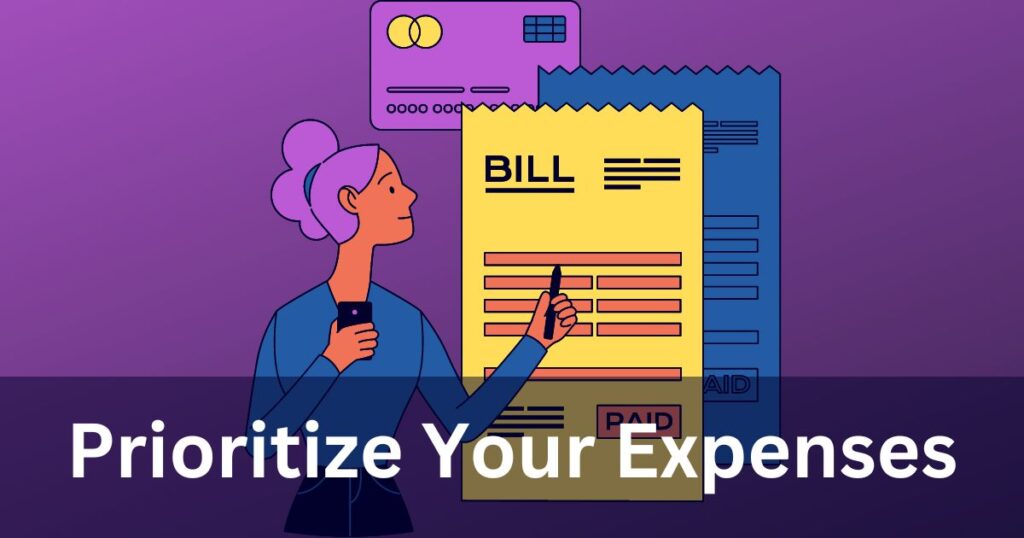Introduction:
Creating a budget can be a daunting task, but it doesn’t have to be. A budget is simply a plan for how you will spend your money, and it can help you achieve your financial goals and avoid overspending. In this article, we will walk you through the process of creating a budget that works for you.
Step 1: Determine Your Income
The first step in creating a budget is to determine your total income. This includes your salary, any bonuses, and any other sources of income. Write down the exact amount of your income and make sure to update it regularly.

For your ease you can follow these points.
- Write down your salary: The most obvious source of income is your salary. Write down the exact amount of your salary, including any bonuses or commissions.
- Include any other sources of income: If you have any other sources of income, such as rental income, investment income, or a side business, make sure to include those as well.
- Track your income over time: Income can fluctuate, so it’s important to track your income over time. Keep track of your income on a monthly basis, and update your budget accordingly.
- Be realistic: While it’s always good to have a positive outlook, it’s important to be realistic when determining your income. Consider any potential changes in your income and plan accordingly.
- Take into account taxes and deductions: Your take-home pay may be different from your gross income due to taxes and deductions. Make sure to take into account any taxes and deductions that will affect your income.
By determining your income, you’ll have a clear picture of how much money you have coming in each month, which will help you create a budget that works for you. Remember to review your income regularly and make adjustments as needed.
Step 2: Identify Your Expenses
The next step is to identify all of your expenses. This includes your bills, such as rent or mortgage, utilities, insurance, and any other recurring expenses. Make a list of all of your expenses, including their amounts, due dates and when they are due.

For your ease you can follow these points
- Make a list of all your expenses: Write down all of your expenses, including bills, groceries, entertainment, and any other regular expenses.
- Categorize your expenses: Group your expenses into categories such as fixed expenses (e.g. rent, mortgage, car payments), variable expenses (e.g. groceries, entertainment) and discretionary expenses (e.g. dining out, clothing).
- Be detailed and specific: Be as detailed and specific as possible when listing your expenses. For example, instead of just listing “groceries,” list specific items such as “milk, bread, eggs.”
- Track your expenses: Keep track of your expenses over time, either manually or by using a personal finance app. This will help you identify any areas where you may be overspending.
- Watch for any irregular expenses: Make note of any irregular expenses such as insurance premiums, car repairs, home maintenance or vacation expenses, so you can plan for them in your budget.
By identifying your expenses, you’ll have a clear picture of how much money you are spending each month, which will help you create a budget that works for you. Remember to review your expenses regularly and make adjustments as needed.
Step 3: Prioritize Your Expenses
After you have identified all of your expenses, it’s time to prioritize them. Prioritizing your expenses is an important step in creating a budget that works for you. Your essential expenses, such as rent and groceries, should be at the top of the list, while non-essential expenses, such as entertainment and dining out, should be at the bottom.

For your ease you can follow these points
- Identify your essential expenses: Essential expenses are those that are necessary for your survival and well-being, such as housing, food, transportation, and healthcare. These should be at the top of your list of priorities.
- Separate wants and needs: After you’ve identified your essential expenses, separate your wants and needs. Needs are expenses that are necessary for you to live, such as groceries, while wants are expenses that you could live without, such as dining out.
- Set financial goals: Set financial goals such as saving for retirement, an emergency fund, or a down payment on a house, and make sure to allocate a portion of your budget towards these goals.
- Consider your values: Prioritize expenses that align with your values. For example, if giving to charity is important to you, make sure to allocate a portion of your budget towards charitable donations.
- Be flexible: Remember that your priorities can change over time, so be flexible and be willing to adjust your budget as your needs and goals change.
By prioritizing your expenses, you’ll be able to make the most of your income and ensure that your essential needs are met, while also being able to save for the future and enjoy some of the things you want. Remember to review your priorities regularly and make adjustments as needed.
Step 4: Create a Spending Plan
Now that you have a clear picture of your income and expenses, it’s time to create a spending plan. Creating a spending plan is an important step in creating a budget that works for you.This is a plan for how you will allocate your money to different expenses each month. Be sure to include a savings plan in your budget for unexpected expenses and future financial goals.

For your ease you can follow these points
- Allocate your income: Once you have determined your income and identified your expenses, it’s time to allocate your income to different expenses each month. Start by allocating money to essential expenses such as housing, food, and transportation.
- Set a savings goal: Set a savings goal for unexpected expenses, such as a car repair or medical emergency, and make sure to allocate a portion of your budget towards savings.
- Prioritize your expenses: Prioritize your expenses based on their importance and make sure that the most important expenses are taken care of first.
- Be realistic: Be realistic when creating your spending plan. Don’t allocate too much money to non-essential expenses, or you may find yourself short on cash later.
- Review and adjust: Review your spending plan regularly, and make adjustments as needed. Keep track of your actual spending, and compare it to your budget. If you find that you are overspending in a certain area, adjust your budget accordingly.
By creating a spending plan, you will have a clear idea of how you will spend your money each month, which will help you manage your finances effectively. Remember to review your spending plan regularly and make adjustments as needed.
Step 5: Track Your Spending
The final step in creating a budget that works for you is to track your spending. Keep track of how much you spend on each expense, and compare it to your budget. If you find that you are overspending in a certain area, adjust your budget accordingly.

For your ease you can follow these points
- Keep receipts: Keep all of your receipts, and record your spending as soon as possible. This will help you keep track of your spending and ensure that you don’t forget any expenses.
- Use a budgeting app: There are many budgeting apps available that can help you track your spending. These apps allow you to easily input your expenses and see where your money is going.
- Use a spreadsheet: You can also use a spreadsheet to track your spending. Create a list of categories, such as housing, food, and transportation, and record your spending in each category.
- Check your bank and credit card statements: Regularly check your bank and credit card statements to ensure that all of your expenses are accounted for.
- Use the Envelope Method: Divide your cash into different envelopes, each labeled with a different category of expenses, such as groceries or entertainment. This method can help you control your spending and avoid overspending.
By tracking your spending, you’ll have a clear picture of where your money is going, which will help you create a budget that works for you. Remember to review your spending regularly and make adjustments as needed. With a little discipline, you’ll be well on your way to achieving your financial goals.
Conclusion:
Creating a budget that works for you is a vital step in achieving your financial goals. By following the steps outlined in this article, you can create a budget that is tailored to your specific needs and help you manage your money effectively. Remember to review your budget regularly and make adjustments as needed. With a little discipline, you’ll be well on your way to achieving your financial goals.

Simple and useful. 👍